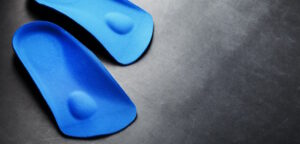Determining When the Original Prosthesis Fitting Requires a Change
Nobody thinks about how to repair something when it’s working perfectly. That holds true for cars, major appliances, and, yes, even prosthetic limbs. If you’re the current user of a prosthesis, such as a prosthetic leg, then you’re probably not thinking about the fit if you’re able to go about your day without discomfort.
On the other hand, if you start to feel pain or notice irritation or soreness, these might be indicators it is time for a supplemental prosthesis fitting. However, this is no reason to be alarmed. Considering how much a residual limb can change over the first eight months after surgery, it is perfectly normal to require multiple fittings and re-fittings after initially choosing a prosthetic device. There are even going to be cases where the prosthesis needs to be outright replaced.
As a leading provider of prosthetics in Kansas City, Cotton Orthotic and Prosthetic Associates has years of experience in prosthesis fittings and helping our clients identify the common signs that it’s time to come back for an adjustment or a new prosthesis.
Sign #1 – Pain or Discomfort
Experiencing pain and/or discomfort is one of the top signs something is not right with the fit of your prosthesis. If either of these sensations occur, it’s important to immediately get in touch with your prosthetist for an appointment so they can troubleshoot the issue.
They will ask you what you’re feeling, what part of the residual limb is affected, and other queries about what you’re experiencing when walking. Getting answers to these questions helps your prosthetist zero in on the root cause of the issue. Minor prosthetic adjustments made during subsequent appointments usually resolve things. Whatever you do, don’t ignore the issue or try to tough it out. That may result in the situation getting worse.
Sign #2 – Wounds, Rashes, and Other Forms of Irritation
Wearing a prosthetic leg or other types of prosthetics are intended to be frictionless and comfortable. If you notice your residual limb has developed sores, blisters, bruises, rashes, or other skin irregularities, this is a sign it’s time for a subsequent office visit. It’s possible the socket of the prosthesis is either too loose or too tight.
Once again, don’t make the mistake of waiting or trying to tough it out. That may potentially result in the area getting more irritated and possibly infected. Once your prosthetist has a chance to examine you, they can troubleshoot the issue and provide a solution.
Sign #3 – The Prosthesis Has Reached the End of its Lifespan
Even the very best prosthetics near you come with a shelf life. On average, a prosthetic leg will last anywhere from three to five years before the wear and tear is significant enough that it warrants choosing a prosthetic device to replace it.
Most people using aged prosthetics will notice the limb starts to feel awkward or not as fluid when walking. It’s also common for old prosthetic limbs to show visible signs of wear and tear, such as warping and cracks in the material. Although some prosthetic limbs can be repaired, choosing a new prosthetic device to replace it is generally the best course of action.
For those with Medicare insurance, it’s important to know that the window for replacement falls between three to five years. Please contact your prosthetist for more information about prosthetic limb replacement and how it will work with your insurance.
Sign #4 – A Significant Change in Weight or Activity
Most people do not stay the same weight over the years. Their health and diet fluctuate, as does their level of activity. Losing or gaining twenty pounds will change the way a person’s clothes fit; it will also affect the fit of their prosthetic limb.
When an individual has a change in their level of activity or change in diet, this usually results in physiological changes that either increase or decrease the volume of the residual limb. For instance, a person who puts on a significant amount of weight will notice their prosthetic limb starts to feel tight and uncomfortable. Conversely, a person who loses a significant amount of weight will notice their prosthetic limb feels loose.
Either one of these scenarios will require a prosthesis adjustment to address the change in weight. Additionally, those who are changing their level of activity usually need to choose a prosthetic device that supports increased functional levels.
Contact Cotton Orthotic and Prosthetic Associates for a Professional Prosthesis Fitting
Those who are searching for prosthetics near Kansas City or the Johnson County area are encouraged to contact Cotton Orthotic and Prosthetic Associates. With more than 20 years of experience, our practice features ABC certified prosthetists who can help you with your prosthesis fitting and choosing a prosthetic device.
Cotton Orthotic and Prosthetic Associates is located at 6311 West 110th Street in Overland Park, KS. Contact us today by using the form on our website or by calling (913) 338-2672.







